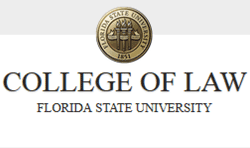Document Type
Article
Publication Date
2024
Publication Title
South Carolina Law Review
Publication Title (Abbreviation)
S.C. L. Rev.
Volume
76
First Page
49
Abstract
In some shape or form, most tort damages for personal injuries have been excluded from federal income taxation since 1919. Despite this rule having celebrated its 1 0 0th birthday, the tax policy justification for the exclusion eludes consensus. Whether the policy is justified or not, the exclusion raises two other issues: should compensatory damage awards reflect non-taxability, and should juries be informed about tax treatment when determining awards? Like the disagreement over policy justifications for the exclusion, states are not in accord on their damage rule or approach to jury instructions. Proponents of a rule that awards should reflect taxation and informing the jury of the tax exclusion stress compensation. Without this rule and information, juries may mistakenly believe that they must inflate damages to account for taxes, thereby handing the plaintiff a windfall. Opponents argue that awards should not reflect taxation and that providing exclusion information unnecessarily complicates trial and benefits the tortfeasor by lowering damage awards. What damages rule should a state adopt, and what should a court do to implement the rule when the defendant requests an instruction informing the jury that some damages are excluded from federal income tax?
We revisit the issue of the taxation of damages and review the policy justifications that have been offered to justify the current exclusion. We then argue that the efficient rule is to measure damages by the gross harm caused by the tortfeasor. To determine how best to implement that rule, we conducted an experiment designed to determine the effects of tax jury instructions. Our conclusion is that the optimal damages rule is best implemented by giving no jury instructions on damages. Perhaps surprisingly, that is our conclusion even if tax law changed to make damages taxable. Even if a jurisdiction were to adopt an inefficient rule of damages, our experiment offers guidance on the approach to jury instructions that would best implement the rule.
Recommended Citation
Jeffrey H. Kahn and John E. Lopatka,
Juries and Tax: The Effect of Income Taxation on Tort Damages, 76
S.C. L. Rev.
49
(2024),
Available at: https://ir.law.fsu.edu/articles/813
